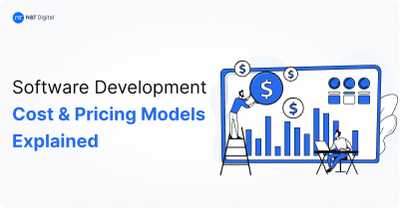The current state of refueling your vehicle
Did you know navigating to and queuing at fuel stations account for 10% of your vehicle’s operating cost? It could be congestion at fuel station leading to long waiting times, inefficient or under staffing, or unforeseen maintenance work making you look to a nearby fuel station.

Regardless the operating cost, refueling is an undesirable experience, especially for commercial vehicles that rely on a fuel other than gasoline like liquefied gas or diesel. Fuel stations selling these products are far and fewer. That is, if a truck or bus comes across one that has ran out of fuel or has too much congestion to handle additional vehicles, they would have to navigate another such fuel station. Such fuel stations tend to be at the other side of the city or highway. This disparity substantially raises fuel expenses and thus operating costs for vehicle owners. We are talking about an industry that is projected to reach USD 165.04 billion in 2024 and grow at a CAGR of 6.12% to reach USD 222.09 billion by 2029.
For fuel station operators, congestion isn’t a desirable situation either when their exhausted staff has to attend endless lines of vehicles. Also, every vehicle that turns around to look for another fuel station either because of congestion or maintenance, is a loss of revenue and reputation for the fuel station.
Safety of customers, staff and equipment is another challenge that fuel stations operators have to ensure. Without proper safety measures, every fuel station is a ticking bomb ready to go boom. Also, fuel stations are subject to compliance and regulations, failing which would drive them out of business or attract hefty fines.
Fuel stations have been traditionally reluctant to adopting technologies in their operations unless there is a regulatory requirement. For example, antitheft technologies surrounding fuel dispensers have made it next to impossible for the station’s staff to nick fuel by tempering with dispensing modules. Another area of fuel station that has seen technology adoption is billing and payments. Modern fuel stations are equipped with end-to-end automated billing and accounting software.
However, if we keep these two elements out, fuel stations work on the same mechanisms they used in the 80s and the 90s.
Their current relationship with technology
The current state of refueling is in a little discord with disruptions in retail sector. This disjoint can be attributed to gap in technology adoption. At one end, we have retailers like Whole Foods that have cut queues at their stores altogether. The Amazon-owned retailer employs a combination of cameras, sensors, and AI-based technologies to replace cashiers. On the other hand, we have our fuel stations still struggling to yesteryear problems:
- higher congestion,
- longer queues,
- understaffing and downtimes
- lower customer satisfaction,
- compliance issues,
- employee retention
- and falling revenue
The absence of technology in fuel station can be attributed to many factors. The sheer scale at which the industry operates. There are just over 10,700 stand-alone gas stations in the U.S., employing more than 120,000 people. We are talking about a highly regulated industry that is subjected to way too many safety nets, whether in the form of compliances board, regulatory bodies or oil companies statuaries.
The rise of green fuels means limited investment in fuel station modernization by investors and fuel companies.
Not to mention, lack of competition, there are fewer oil companies then there used to be. Over time, smaller oil companies merged or were acquired, leading to a smaller number of larger companies. A lack of competition means monopolistic business practices that revolves around profits rather than customer experience.
Despite, emerging technologies such as AI and IoT have showed some promises that could improve refueling experience for customers, fuel station management for operators and efficiency and revenue for oil companies.
What Al could bring to the table for fuel stations?
AI could save chaos arising from three most pressing issues at a fuel station: refueling, safety, and regulations.
Refueling
Perhaps, the most challenging part for the fuel station operators considering some stations operate 24/7 is management. While technology cannot do anything about number of people visiting your fuel station for refueling, it can ensure that they are spending less time doing so.
For example, the AI engine could track vehicle movement at a fuel station in real-time and can deduce waiting time and serving time. This data could then be streamed to a consumer app, which people looking to refuel their vehicle can refer to and discover the least congested fuel station nearby.
Also, fuel station operators could use this data and additional stats like transit time, number of attendants deployed, and current utilization of resources to make informed decisions and, thus, reduce congestion and improve serviceability.
Oil companies could send the data to an analytics engine and get insights into congestion, forecourt operations, and compliance with safety standards and emission norms.
Maintenance
It is not uncommon for fuel stations to experience downtime in the middle of the day due to equipment failure or capacity overruns. Many fuel stations run 24/7 at peak load with limited support staff giving them little to no time carry scheduled maintenance tasks. Unforeseen shutdowns are not only an inconvenience for customers but also source of revenue loss for oil companies and operators.
The worst part is the operators can do little to none to make things better for their fuel stations. It is sheer luck if your fuel station experience overruns in the middle of the day despite rigorous capacity planning. With little to no incentives to conduct preventive maintenance tasks, this is mostly business as usual for fuel stations. Blame it on lack of competition or customers reluctance to show any brand loyalty to fuel companies or fuel stations, fuel stations are and will remain an operation of necessity.
But AI technology has the potential to turn around fuel station operations for the benefit of station owners and fuel companies. With the fuel station monitoring system connected to an AI based software system and some historical data and oversight, the system can detect anomalies in an operation module before it happens. Take your usual fuel station management system dashboard expect now it tells you how much fuel should you put in the containers so that they don’t see overruns until the next midnight. Or if the fuel dispenser might malfunction.
Regulation
Regulations while a headache for fuel operators are critical for oil companies to keep in check in order to avoid penalties from safety regulators, labor unions and environmental bodies. Then there are consumer right groups constantly under lookout for potential fuels thefts at fuel stations.
Fuel stations work on a thin margin and there is not much in the way for them to adhering to compliance requirements. At most oil companies can shut down the station and replace the current management group. This is also rarely the case because oil companies have little incentives to raise alarm when a fuel station is skipping compliance requirements to cut corners. Even with point-to-point surveillance at their fuel stations, monitoring individual station for noncompliance is an impossible task for fuel companies. We are talking about 1000s of fuel stations to monitor 24/7. It would take an enormous staff for oil station and be impractical cost wise.
However, with an Al-based image recognition system attached to cameras and sensors at the fuel station, the machine learning engine trained to detect regulatory lapses at fuel stations can report such concerns to oil companies in real time. This would give oil companies some talking point if at all a regulatory body comes knocking on their door.
The Modern Fuel retail ops platform
A fuel retail ops platform is a digital representation of your station. Just as your station has a lot going on so does its digital representation. The representation moves in the same direction as your fuel station and in real-time. Whether you’re a fuel station operator or oil company’s auditor, watching the digital representation of the fuel station is as good as being at the station yourself even better. Because there is only so much your eyes can meet that advanced machine learning engine can detect and report in real-time.
We are talking about if fire safety protocols are in place, which fuel dispenser are working which aren’t, which working fuel dispenser is unmanned, when will the pump will experience capacity overrun, any piece of equipment experiencing anomaly, billing software failure rate, data from anti-tampering hardware, total staff and their shift timing etc.
A modern fuel retail ops platform consists of three modules: consumer app, fuel station implementation and oil companies’ outlet. The modules are how the platform is realized.
Consumer App
Consumer app works as an extension for consumers to make most of the data coming out of the ops platform. If the platform detects that the fuel station is experiencing congestion, it can transmit the information to the app. A person looking to refuel their vehicle learns that their nearest station is having a hard time serving their customers and it is better they look for an alternative.
The benefit would be fuel stations with congestion would not welcome additional vehicles and customers will spend less time refueling.
Fuel station Implementation
Fuel stations operators have a hard time maintaining their operations. There are so many things that can go wrong at a time. It could be a malfunctioning dispenser, couple of staff on a medical leave or a delay in supplies. Either ways, it is the duty of the operator to ensure smooth functioning at the station regardless the challenges.
Nevertheless, the biggest fear of fuel station operators is congestion. Scheduled maintenance takes a backseat when you have an entire cavalcade requesting fuel at the same time queuing the entire length of the station and back. Imagine this happening when your half of the attendants are on leave and one of the dispensers isn’t working.
The Role of Dashboard
The dashboard can help you with both real-time and cumulative data. For example, it will show you the exact number of vehicles at the station sorted by vehicle type(car, auto and HMV) and what is their wait time. In addition, it will display how many vehicles did the fuel station served the entire day sorted by vehicle type and ownership.
The dashboard comes handy when the operators want to take a fix of the situation: how many personnel are present and which bays are either underutilized or overutilized. Also how many transactions were made, how much fuel was sold and what was the income made from those transactions.
Oil Companies’ Outlet
As mentioned, oil companies are more concerned with compliance and regulatory requirement than day to day nuances of a fuel station. They are more interested in fire safety rating of their fuel station than how many staff had flu on Thursday.
Oil companies need eyes and ears on the fuel stations operating under their banner but cannot afford to staffing requirements in literal sense. AI technologies such as pattern recognition, NLP and deep learning come as a great relief for them to automate compliance monitoring at their fuel station and thus avoiding potential fines.
How to develop such a platform: resources, tools and technologies
The resources, tools and technologies to build a software system comes down to personal preferences of the customers we work with. It has a lot to do with cost and their existing infrastructure but there is always more to the story. Regardless, the technology and tools remain more or less consistent across the board. Let take a look some of those:
Mobile Technologies
Certainly! We need to build mobile apps for both iOS and Android. You may do so with native code and tools or one of the third-party cross-platform development frameworks available. While cross-platform mobile apps were unpopular for subpar performance, the gap has been narrowing in the wake of advances in cross-compiling speeds.
Native Development
Native iOS Development
For iOS, Apple's official development tools include Xcode (IDE) and Swift (programming language). You may use Objective-C if you’re old school. The two programming languages compiles code to the same bytecode so you may start a project in Objective-C and continue in Swift and vice-a-versa. Make sure you have an Apple computer to run the required development environment and tool, including Xcode. Also, you may hire a mobile app development service provider like NNT Software.
Native Android Development
For Android, Android Studio (IDE) is the primary tool. You can write apps in Java or Kotlin. Android Studio works on Windows, Linux and macOS. That is, you may migrate your projects between operating systems. Native Android development is losing ground to Flutter. The cross-platform framework provides excellent code-portability against negligible performance drop. Google develops flutter.
Cross-Platform Development
Cross-platform frameworks allow you to build iOS and Android apps using a single codebase. Here are two most popular ones:
Flutter
Developed by Google and the now go-to method for developing Android apps, Flutter enables you to create mobile, web, and desktop apps from a single codebase. Flutter is based on Dart programming language and has gained too much popularity.
React Native
Developed by Facebook, React Native uses JavaScript to build native apps. That, you may call your web developers across the hall and make them do mobile development with little training. You may have noticed Facebook is one of the largest developers on iOS and Android. Read Instagram, Facebook, Groups and WhatsApp. React Native is something they came up with to streamline and accelerate mobile development projects at their development centers. It actually worked. It was built on the top of a leading JavaScript library popular for web development called React. React is nowadays go to platform for developing web consoles by software development companies like NNT Software.
Web Technologies
Web technologies play an integral role in development of fuel retail ops platform’s key modules including the dashboard and notification system.
For you we have listed some of the most popular tools to develop web applications.
Ruby on Rails (RoR)
Ruby on Rails, commonly known as RoR or Rails, is a powerful web framework written in Ruby. It follows the Model-View-Controller (MVC) architecture. It boasts features like
convention over configuration (COC), active record, and rapid development is used by brands such as GitHub and Airbnb.
Laravel
Laravel is a PHP-based web framework known for its elegant syntax and expressive features. Laravel is favoured for features like artisan CLI, eloquent ORM and blade templating engine and by brands such as Buffer.
React
As mentioned, React is a JavaScript library developed by Facebook. Although primarily used for building user interfaces, it can be extended to create full web applications with Features like Component-based interface and Virtual DOM. It is backed by a Large community including full time developers from Facebook, Instagram, and Airbnb.
Django
Django, written in Python, is a high-level web framework that emphasizes rapid development and clean, pragmatic design. Django is still used in parts by Instagram(which has moved to React for most part) and commenting app Disqus.
ASP.NET
ASP.NET, developed by Microsoft, provides tools for building dynamic web applications using .NET. It features an MVC architecture and uses Razor syntax that Combines HTML and C# with Entity Framework. ASP.NET is bread and butter of every web application developed by Microsoft. Stack Overflow, the Facebook of developers, is built using ASP.NET.
AI technologies
When it comes to developing AI tools for pattern and image recognition, there are several powerful options available. Let’s explore some of the best tools and software for this purpose:
Google Cloud Vision API
Description: Google Cloud Vision API is a set a pre-trained machine learning models for image recognition. It can detect objects, faces, landmarks, and text on a live stream and stored image and video. This API can come handy from gathering insights from CCTV cameras at a fuel station. With our AI development service, you may entirely leave CCTV surveillance to automated bots and ML based algorithms.
Clarifai
Clarifai offers an easy-to-use API for image and video recognition. It supports custom model training and provides pre-built models too like Google’s Vision API. Clarifai shines when it comes to object detection and the amount of insight it can get from visual data to make predictive analysis.
Amazon Rekognition
Amazon Rekognition is a cloud-based service that analyses images and videos. It is known for its advanced facial analysis engine that can tell the subject’s emotions, age, and gender with decent certainty. You may train objects to such custom labels too. Such as telling a working This service is popular for security surveillance.
The cost of building the platform: breakdown of cost
Factors affecting the cost and budget considerations.
The cost of building the software system varies depending on various factors, such as:
The scope and complexity of the project
The more features and functionalities you want to include, the more complex and costly the project will be. If we look at the table below, you can see the cost rises dramatically of development as we add more features to the MVP.
If you are running a commercial business with the software, you cannot function without these advanced features. Adding enterprise features to your software development project will add further layers of cost.
The platform and device choice
The more platforms and devices you want to support, the more costly the project will be. For example, building a native mobile fuel delivery app for iOS and Android will be more expensive than building a web app or fuel delivery solution that can run on any browser and device.
The technology stack and architecture
The more advanced and specialized the technology stack and architecture, the more costly the project will be. For example, using a microservices architecture and a MEAN or MERN stack will be more expensive than using a monolithic architecture and a PHP or Ruby on Rails stack.
The development team and resources
The more experienced and qualified the development team, the more costly the project will be. For example, hiring a development team from the US or Europe will be more expensive than hiring a development team from India or Asia. As evident from the table and upon applying currency conversion, you can see there is a significant difference between hiring Indian developers over those living in the USA or Australia. Costs can rise 7-8 times when moving software development from India to either the USA or Australia, without any added benefits in terms of quality or speed of delivery.
| Feature | India (INR) | USA (USD) | Australia (AUD) |
|---|---|---|---|
| MVP (Fuel Retail Ops Platform & Oil Companies Outlet) | ₹5,000,000 - ₹10,000,000 | $750,000 - $1,050,000 | A$1,000,000 - A$2,000,000 |
| Advanced Features (AI-powered dashboard and automation and fuel delivery app for consumer and fuel stations) | ₹10,000,000 - ₹20,000,000 ₹20,000,000+ | $1,500,000 - $3,000,000 | A$2,000,000 - A$4,000,000 |
| Enterprise-Level Features (Scalability for multiple fuel stations, complex integrations, advanced analytics) | ₹20,000,000+ | $3,000,000+ | A$4,000,000+ |
Based on these factors, the cost of building the software can range from $1,000,000 or more. However, this is only a rough estimate, and the actual cost may vary depending on the specific requirements and preferences of your project.
Building the software with NNT
Refueling is the final and most crucial stage of a fuel station’s workflow, wherein a vehicle reaches the dispenser, gets refueled and left. However, it is also the most challenging and costly part of the workflow, as it involves meeting customer expectations, queuing management, reducing emissions, and managing resources.
Fortunately, such a software system can help overcome these challenges by providing solutions. For example, NNT DIGITAL is a software development company that provides features such as congestion alerts, rerouting, analytics, and customer alerts via the app with its software based AI integration service.
By using our software, businesses can improve their, efficiency, and customer satisfaction, and gain a competitive edge in the market. They can cope with the increasing demand and complexity of refueling, as well as the changing customer preferences and behaviour.
We enable fuel station to offer faster, cheaper, and more convenient refueling options, such to adapt to different scenarios and situations. Together, we can work together to reduce their environmental impact and comply with the regulations and standards of modern refueling.
Table of contents
- The current state of refueling your vehicle
- Their current relationship with technology
- What Al could bring to the table for fuel stations?
- The Modern Fuel retail ops platform
- How to develop such a platform: resources, tools and technologies
- The cost of building the platform: breakdown of cost
- Building the software with NNT




